Exercises (1810)
Shifting exercise: Sideways steps in squat position (left)
Power
Individual work
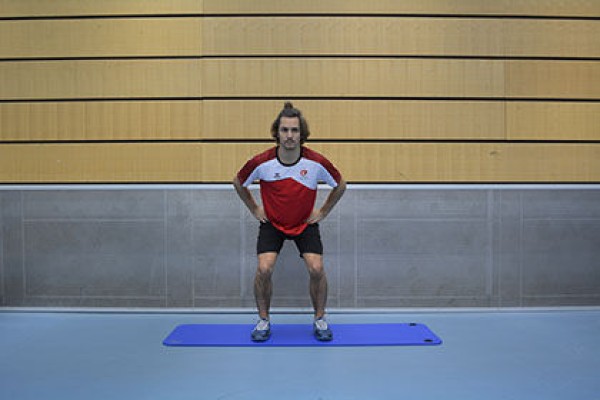
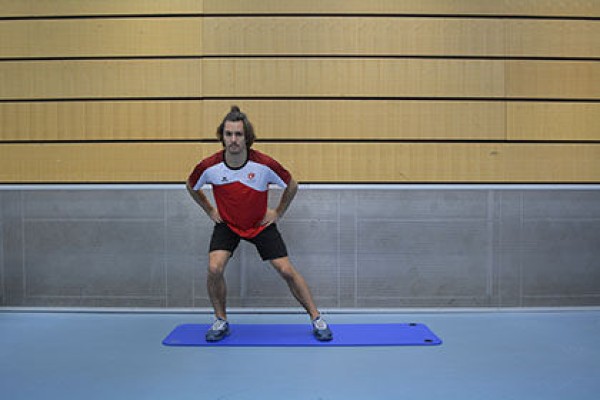
Squat/knee bend position with upper body upright (buttocks slightly higher than knees), arms supported on hips. Move forwards using lateral adjustment steps (left leg forwards to a very wide, deep squat position, right leg backwards to a hip-width squat position).
Attention:
Always keep your squat as low as possible.
Lighten:
Bend your legs less (higher basic position/squat).
Harden:
Additional weight (on the shoulders).
1 weight vest/sandbag ► Make the exercise more difficult (additional weight)
Shifting exercise: sideways steps in squat position (right)
Power
Individual work
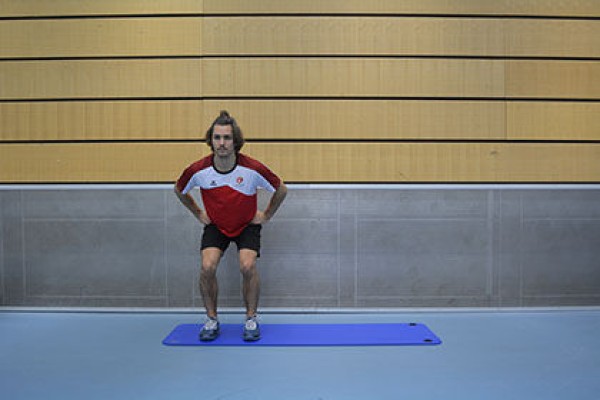
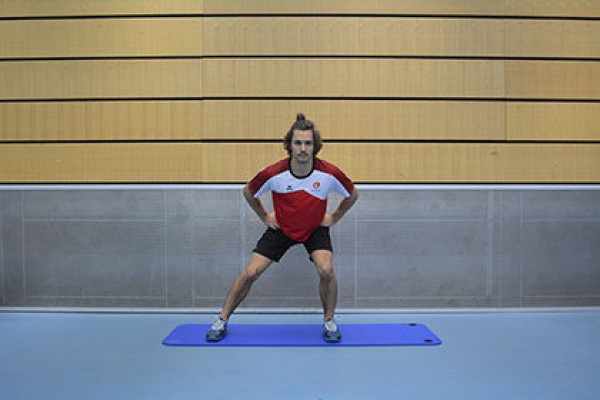
Squat/knee bend position with upper body upright (buttocks slightly higher than knees), arms supported on hips. Move forwards using lateral adjustment steps (right leg forwards to a very wide, deep squat position, left leg backwards to a hip-width squat position).
Attention:
Always keep your squat as low as possible.
Lighten:
Bend your legs less (higher basic position/squat).
Harden:
Additional weight (on the shoulders).
1 weight vest/sandbag ► Make the exercise more difficult (additional weight)
Shifting exercise: Sprinting
Power
Individual work

Cover a certain distance as quickly as possible/at a sprint.
No material required
Displacement exercise: jump forwards
Power
Individual work

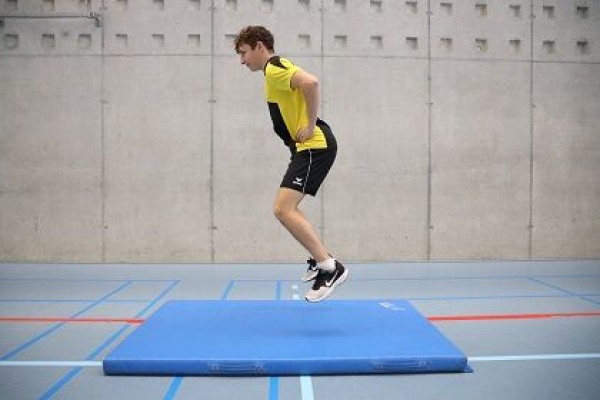
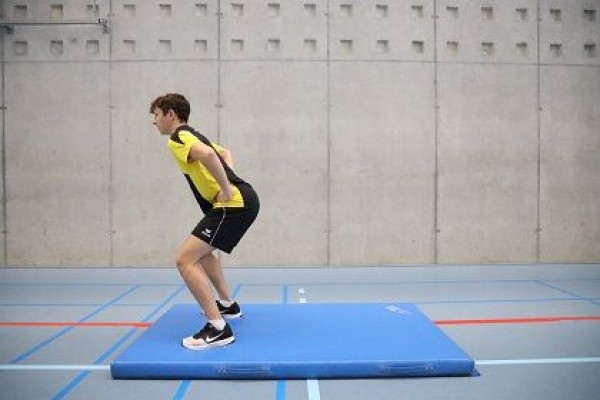
Stand with your hips wide apart, legs slightly bent and arms supported on your hips. Move forwards by jumping off with both legs (double jumps).
Attention:
Knees always remain behind the toes, maintain balance with bent knees after each landing.
Lighten:
Bend the knees less (greater angle); jump less forwards.
Harden
Bend your knees more (smaller angle); arms in front; additional weight (on the shoulders/legs).
Variant:
Arms not propped up or in front, but actively support the jump with your arms (with momentum).
2 weight cuffs/1 weight vest/sandbag ► Make the exercise more difficult (additional weight)
Shifting exercise: Jump forwards (frog hop)
Power
Individual work
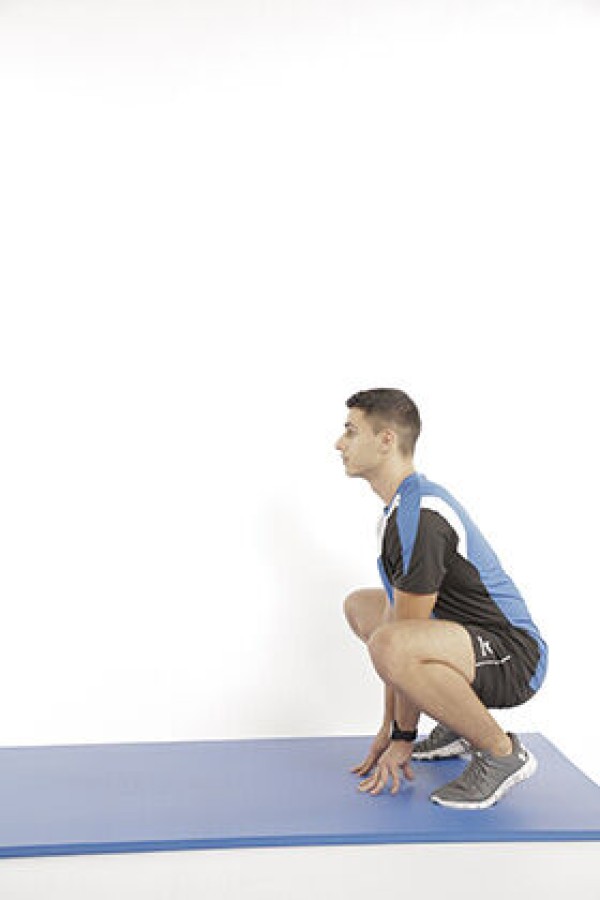
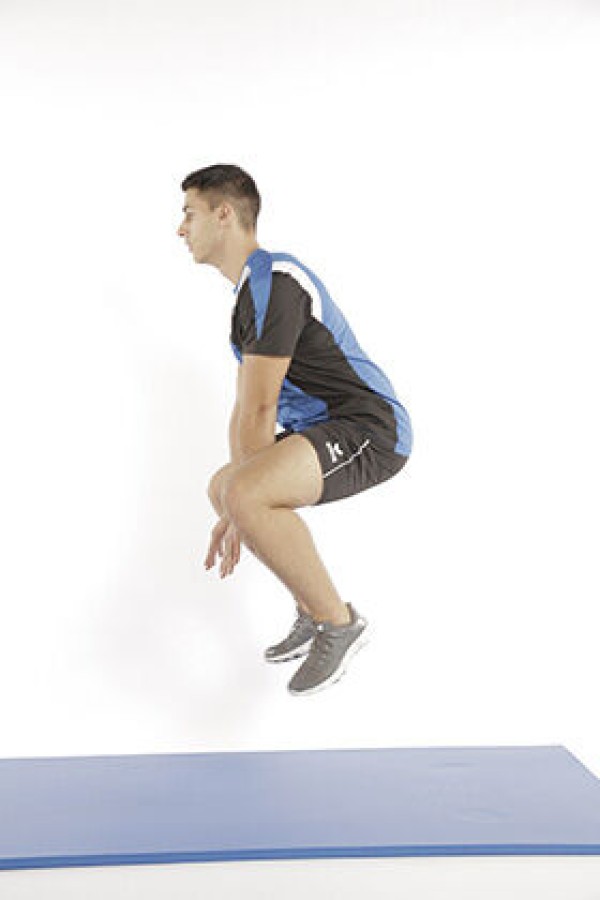
Crouching position with your arms between your legs (touching the floor). Jump forwards with both legs and back to the starting position.
Attention:
Keep your back straight, cushion the landing.
Lighten:
Less long/high jumps.
Harden:
Additional weight (on the shoulders).
2 weight cuffs/1 weight vest/sandbag ► Make the exercise more difficult (additional weight)
Shifting exercise: Jump to the side forwards with one leg
Power
Individual work
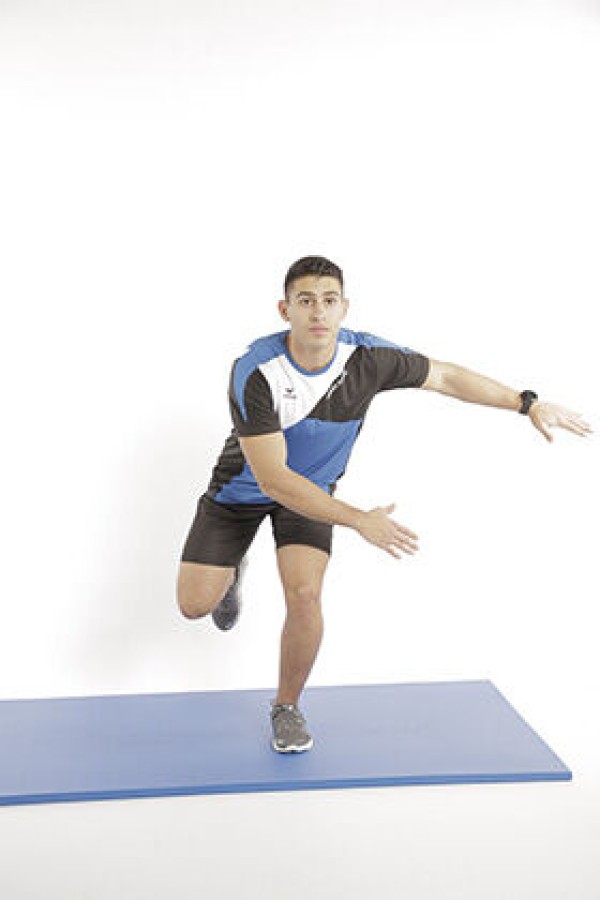

Stand on one leg with the supporting leg slightly bent. Tilt your upper body forwards slightly and jump forwards to the side onto the other leg (alternating single-leg jumps). Keep your balance briefly before the next jump.
Attention:
Keep your knees stable and always behind the tips of your feet.
Lighten:
Bend your knees less (greater angle); jump less to the side/forward.
Harden:
Bend your knees more (smaller angle); hold additional weight (on your legs, on your shoulders, in front of your chest or in your hands); bend your knees more (smaller angle).
2-4 weight cuffs/2 weight balls/dumbbells/1 weight vest/weight disc/sandbag/fighting rucksack ► Make the exercise more difficult (additional weight)
Shifting exercise: Trotting
Power
Individual work
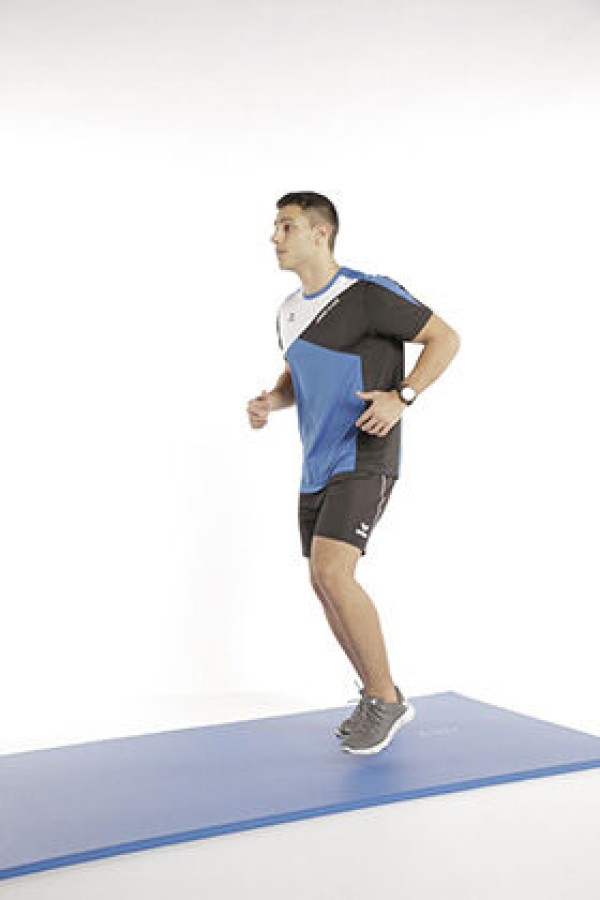
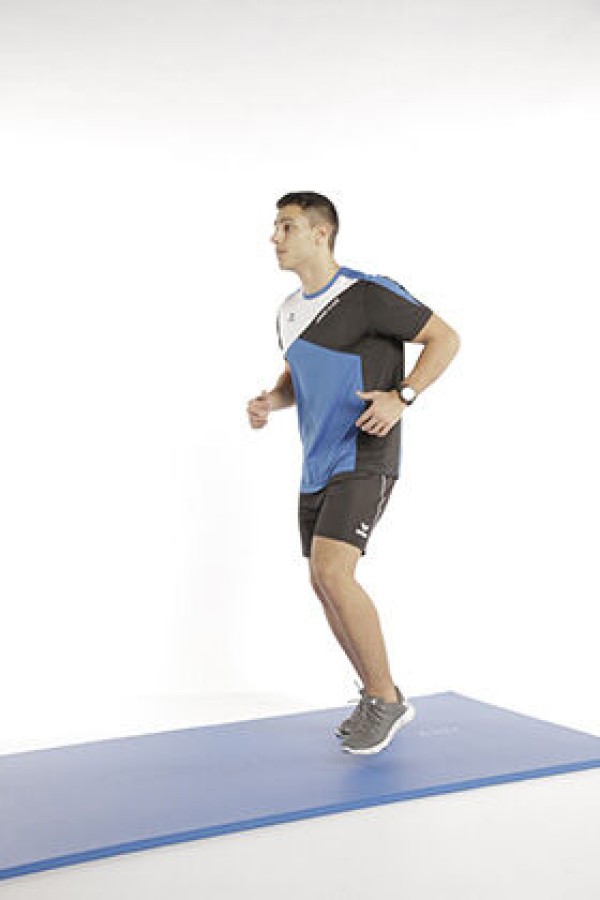
Cover a certain distance at a relaxed running pace/gait.
Variant:
Shake out your arms and legs at the same time.
No material required
Shifting exercise: Trotting with loosening exercises
Power
Individual work
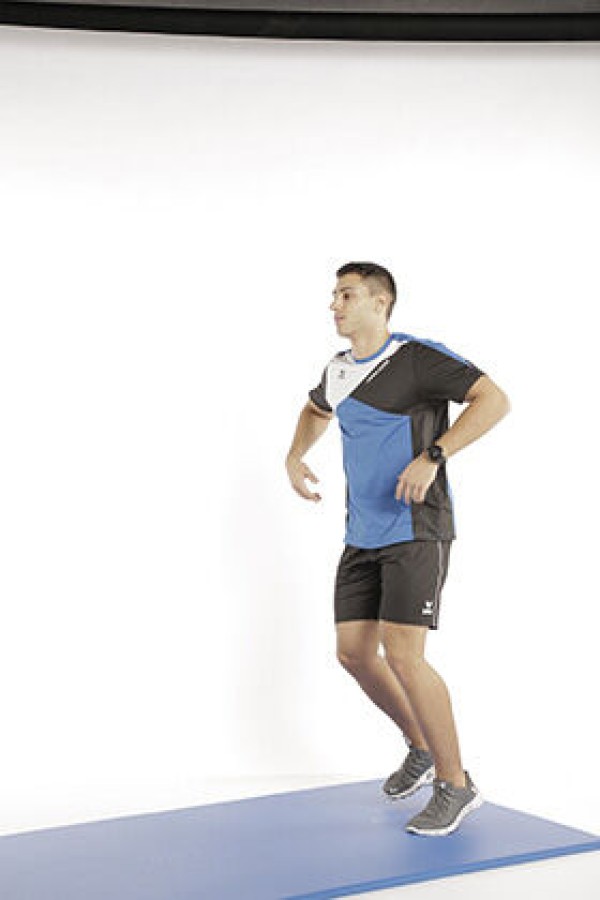
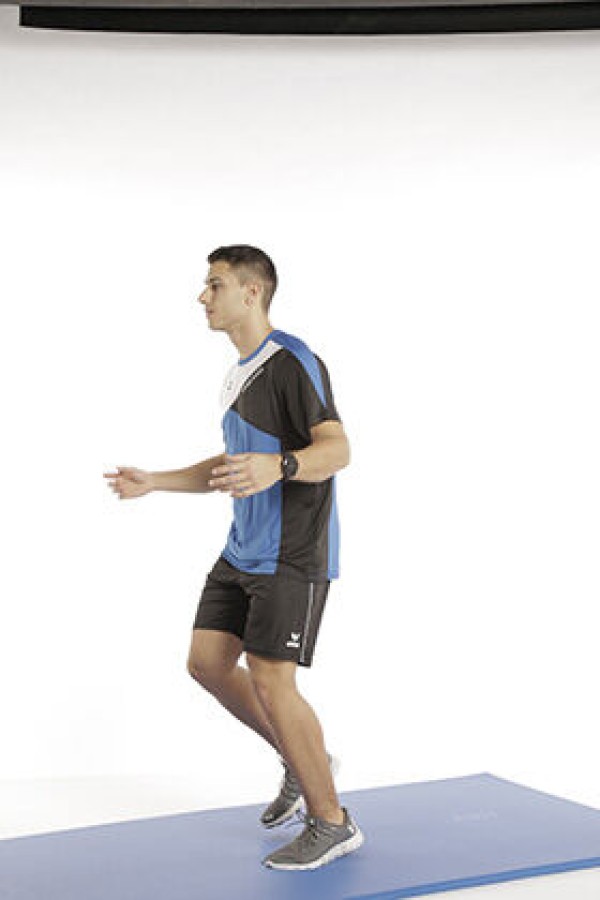
Cover a certain distance at a relaxed running pace/gait, shaking out your arms and legs (loosening exercises).
No material required
Shifting exercise: forearm support
Power
Individual work
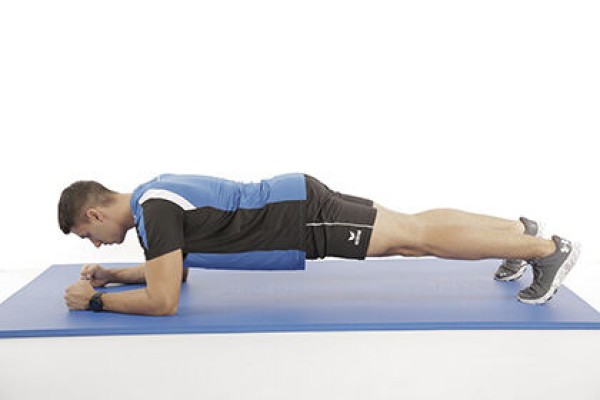
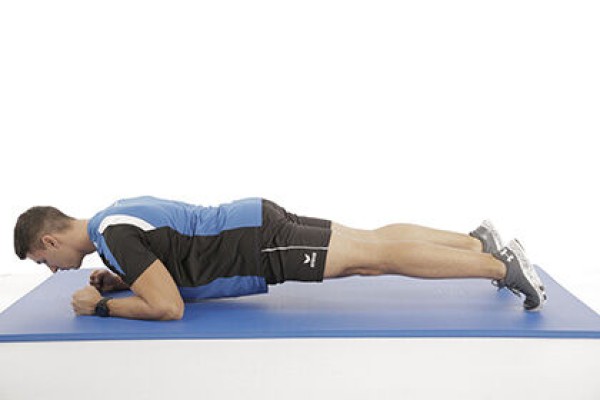
Shift forwards in forearm support by moving the forearms and legs.
Attention:
Do not arch your back, the upper body and legs should form as straight a line as possible.
Lighten:
Place your knees on the floor, stretch your buttocks slightly upwards.
Harden:
Additional weight (on your back).
Variation:
Shift sideways.
1 weight vest/weight disc/sandbag ► Make the exercise more difficult (additional weight)
Shifting exercise: four-foot stance (backwards)
Power
Individual work

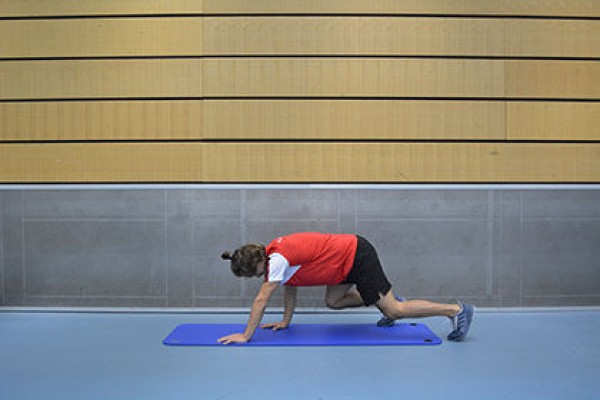
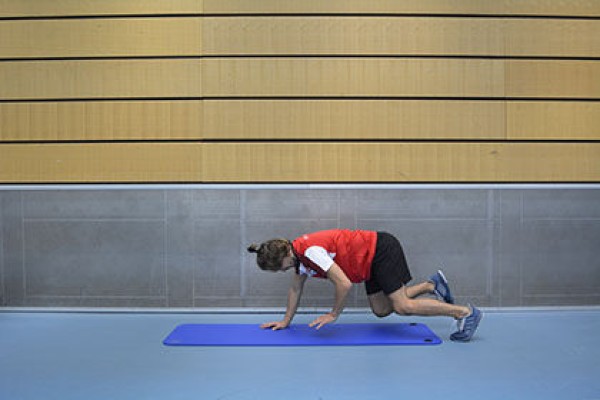
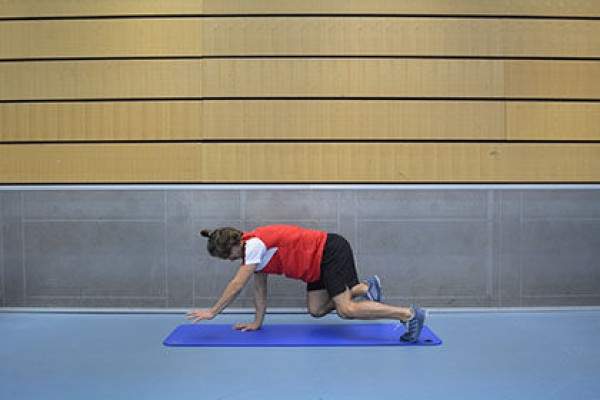
Shift on all fours. The arms are almost fully extended, the legs are bent and the chest is directed towards the floor. Movement is in the direction of the legs.
Attention:
Knees are not lowered.
Harden:
Additional weight (on the back).
Variation:
Forwards, backwards and sideways shifts are possible.
1 weight vest/weight disc/sandbag ► Make the exercise more difficult (additional weight)
Shifting exercise: four-foot stance (forwards)
Power
Individual work
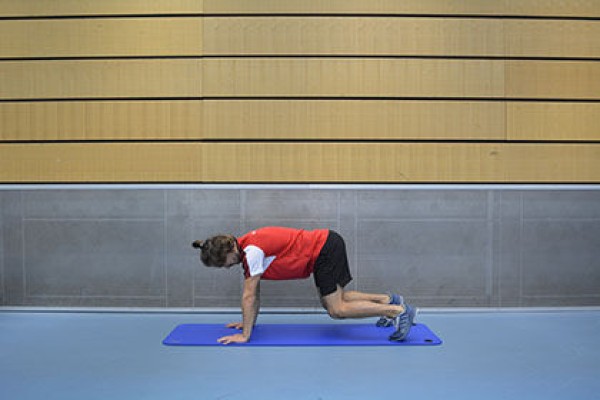
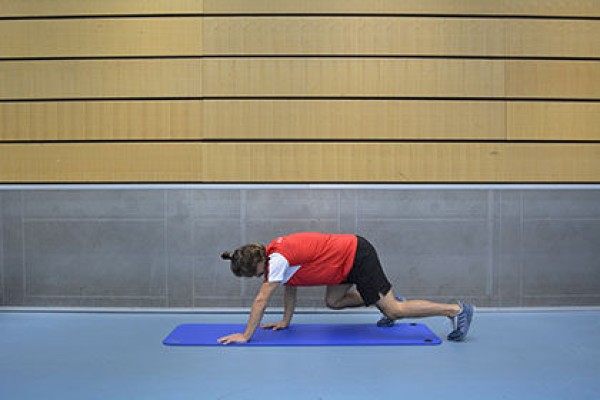
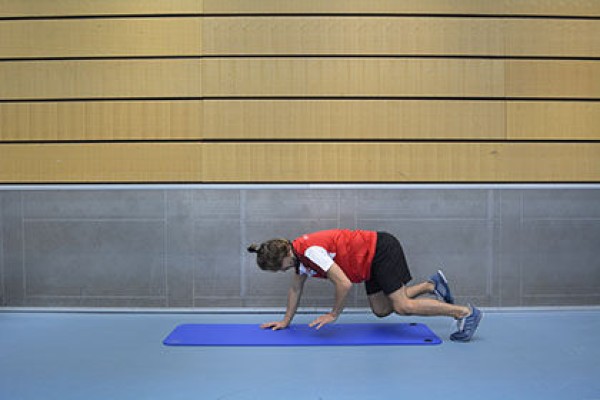
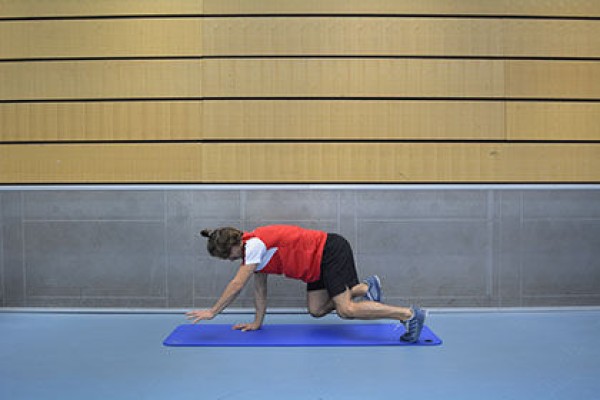
Shift on all fours. The arms are almost fully extended, the legs are bent and the chest is directed towards the floor. Movement is in the direction of the arms.
Attention:
Knees are not lowered.
Harden:
Additional weight (on the back).
Variation:
Forwards, backwards and sideways shifts are possible.
1 weight vest/weight disc/sandbag ► Make the exercise more difficult (additional weight)
Shifting exercise: four-foot stance backwards (backwards)
Power
Individual work
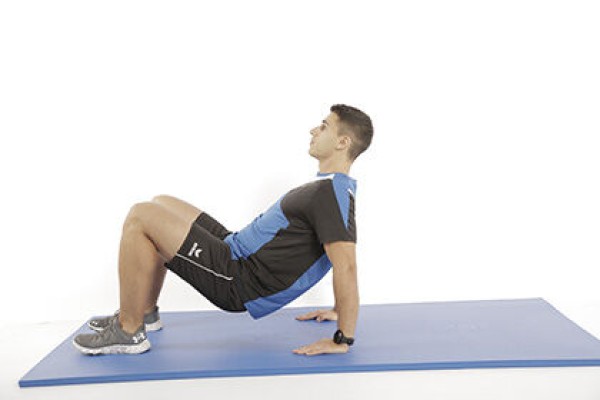
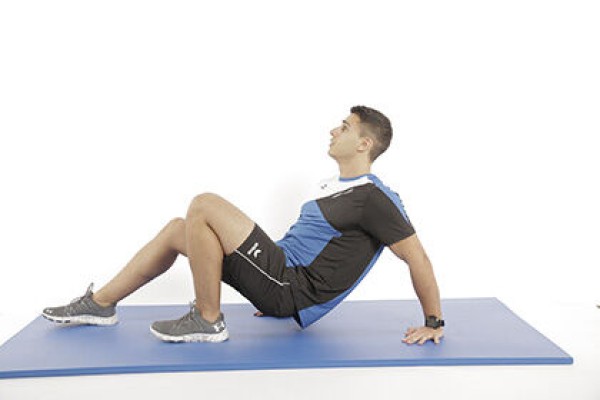
Shift on all fours, arms almost fully extended, legs bent, chest facing upwards. The movement is in the direction of the arms.
Attention:
Do not lower the buttocks.
Lighten:
Buttocks closer to the floor (sagging).
Harden:
Additional weight (on the hips).
Variant:
Forwards, backwards and sideways shifts are possible.
1 weight vest/weight disc/sandbag to make the exercise more difficult (additional weight)
Shifting exercise: four-foot stance backwards (backwards)
Power
Individual work

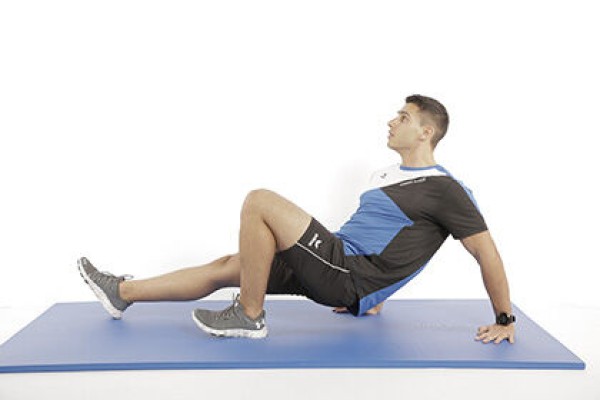
Shift on all fours. The arms and legs are almost fully extended and the chest is pointing upwards. Movement is in the direction of the arms.
Attention:
The buttocks are not lowered.
Lighten:
The buttocks are closer to the floor (sagging).
Harden:
Additional weight (on the hips).
Variant:
Forwards, backwards and sideways shifts are possible.
1 weight vest/weight disc/sandbag ► Make the exercise more difficult (additional weight)
Shifting exercise: four-foot stance backwards (forwards)
Power
Individual work
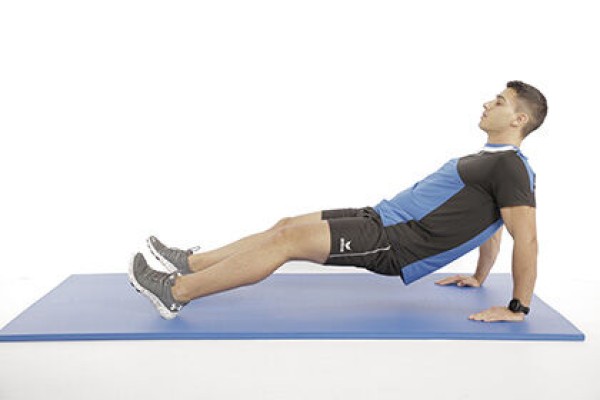
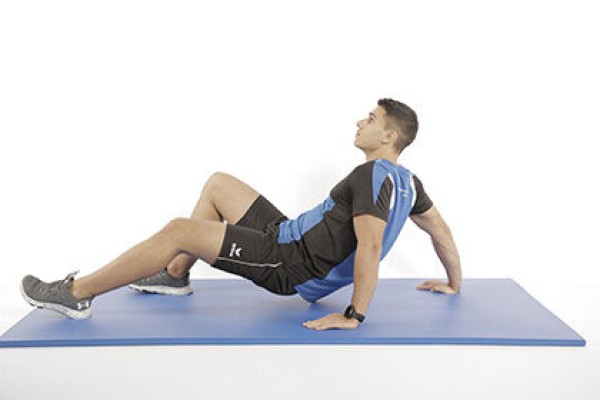
Shift on all fours. The arms are almost fully extended, the legs are bent and the chest is facing upwards. Movement is in the direction of the legs.
Attention:
The buttocks are not lowered.
Lighten:
The buttocks are closer to the floor (sagging).
Harden:
Additional weight (on the hips).
Variant:
Forwards, backwards and sideways shifts are possible.
1 weight vest/weight disc/sandbag ► Make the exercise more difficult (additional weight)
Four-legged stance with arms raised
Power
Individual work
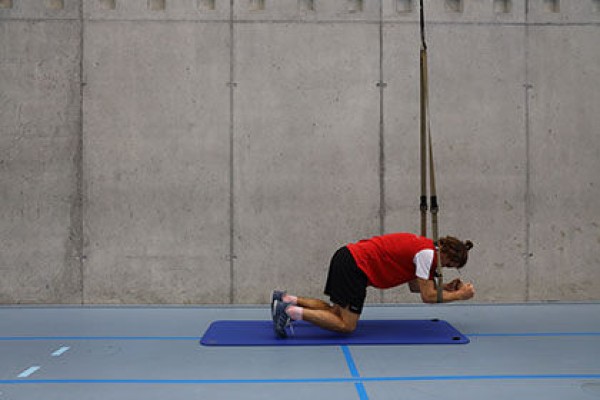

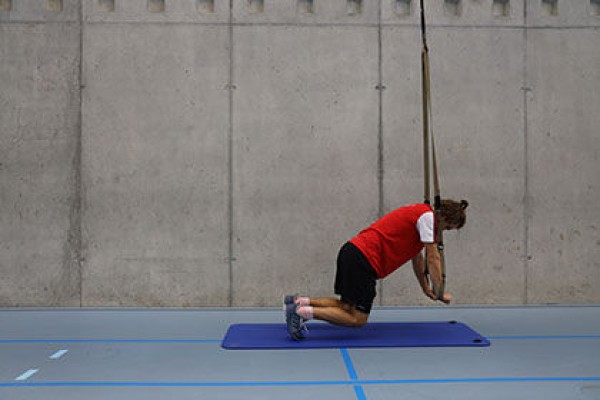
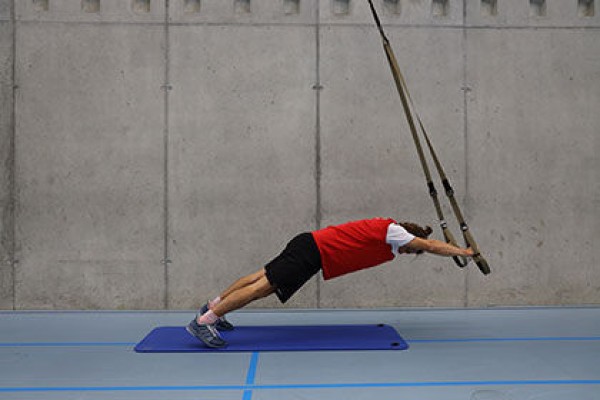
Progression I:
Adjust the sling trainer to mid-lower leg length (standing). Stand on four feet with your forearms in the slings, looking towards the floor (head in extension of the spine). Lift your knees (slightly) off the floor and hold the position.
Progression II:
Analogue progression I, but with support on your hands.
Progression III:
Analogue progression II, additionally bring your hands forwards.
Attention:
Keep your back straight, no hollow back.
Harden:
The more horizontal the body position and the further away the feet are from the attachment point, the more challenging the exercise becomes.
Variant:
For progression I+II, raise and lower the pelvis (do not put your knees down).
1 sling trainer
Four-legged stance with legs elevated
Power
Individual work
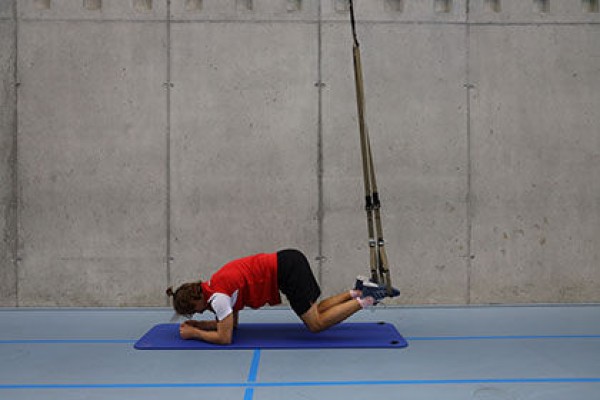
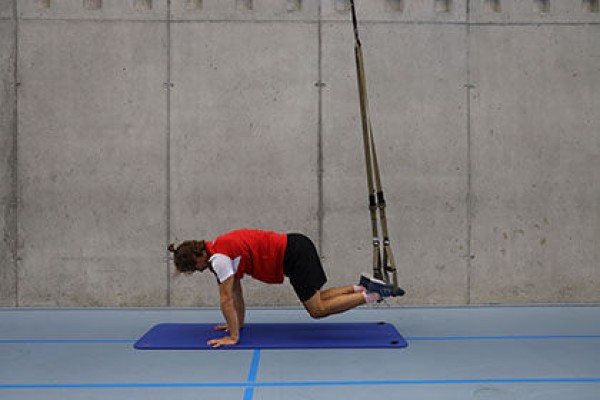
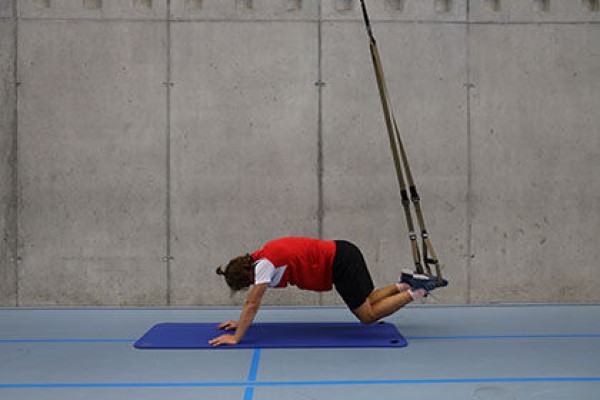
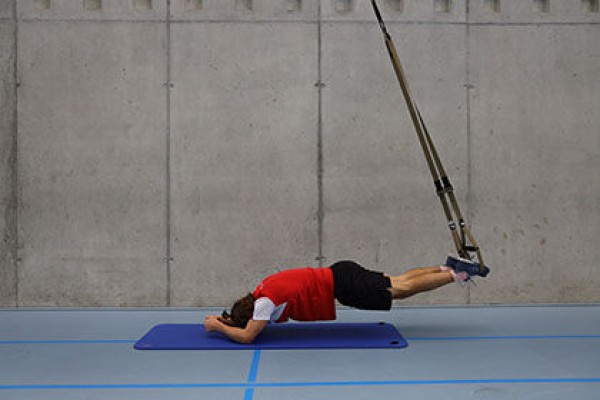
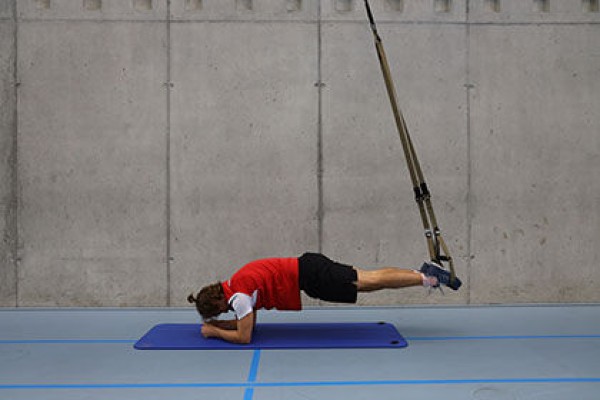
Progression I:
Adjust the sling trainer to the length of the centre of the lower leg (when standing). Stand with four feet on the forearms, feet vertically under the attachment point in the slings, looking towards the floor (head in line with the spine). Lift your knees off the floor and hold the position.
Progression II:
Analogue to progression I, but with the upper body supported on the hands.
Progression III:
Analogue to progression I, but with the upper body pushed back slightly with pressure from the shoulders and then returned.
Attention:
Keep your body tense, don't let your hips sag and keep your back straight (for all progressions).
Harden:
The further away your head is from the attachment point, the more challenging the exercise becomes.
Variant:
In progressions I+II, raise and lower your pelvis (don't put your knees down).
1 sling trainer
Wall Drill 2 (Switch)
Power
Individual work
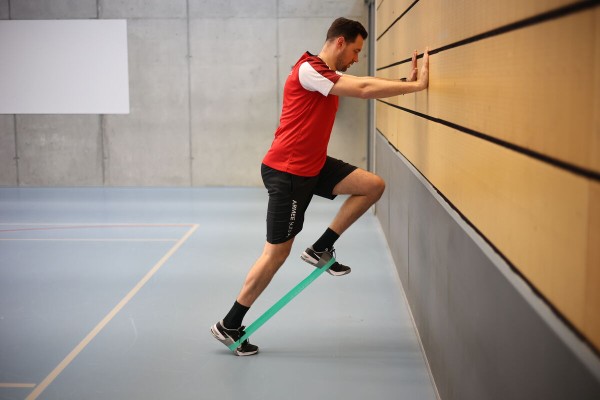
Wall Drill 3 (Double Switch)
Power
Individual work
Wall Drill 4 (Continuous Switch)
Power
Individual work
Alternating jump on an object
Power
Individual work
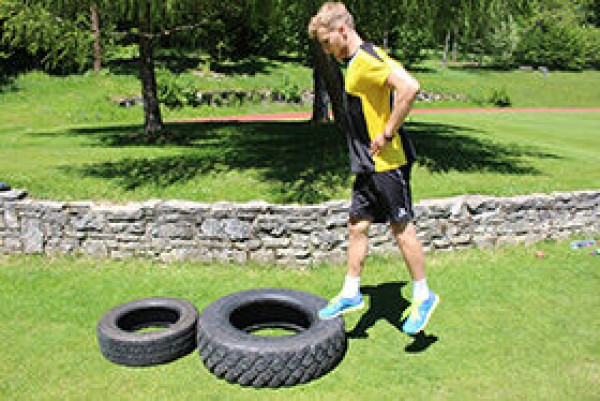

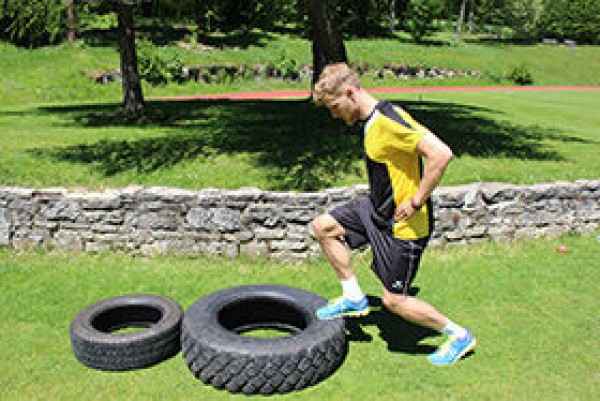
Stand with one leg on the tyre and one on the floor, alternating the foot position as you jump.
Attention:
Keep your upper body upright, cushion your landing.
Lighten:
Start the exercise standing in front of the object, alternating one foot on the object and back to the starting position (no jumps - similar to climbing stairs); choose a lower element; lower cadence.
Harden:
Higher cadence; additional weight (on the feet); jump on the tyre (helmet) upwards to change legs.
1 tyre (10DM)
1 tyre (DURO)/helmet ► Make the exercise easier
2 weight cuffs/1 weight waistcoat ► Make the exercise more difficult (additional weight)
Alternating jump on an object
Power
Individual work
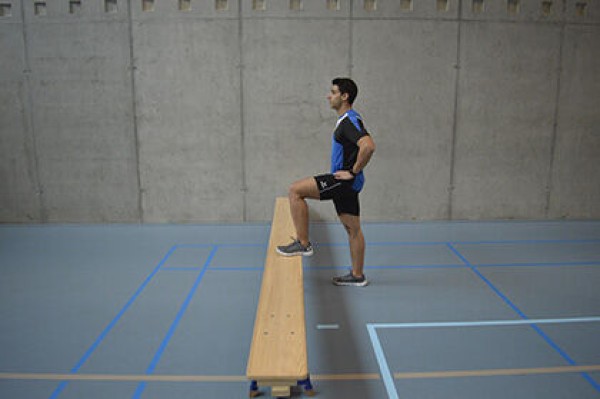
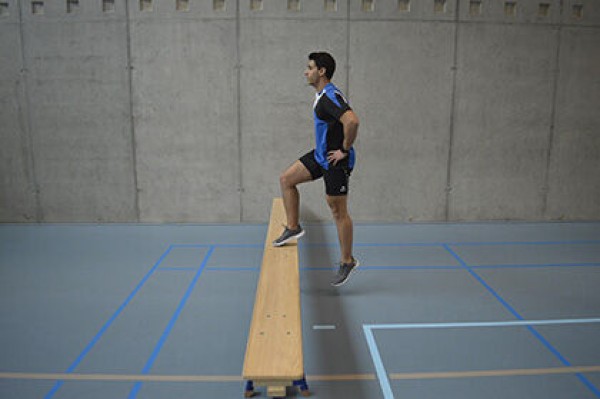
Stand with one leg on the long bench/swinging box top and the other leg on the floor. Alternate the foot position during the jump.
Caution:
Keep your upper body upright, cushion the landing.
Lighten:
Start the exercise standing in front of the element, alternating one foot on the object and back to the starting position (no jumps); choose a lower element; lower cadence.
Harden:
Select a higher element; higher cadence; additional weight (on the feet); jump on the element to change legs.
1 long bench
1 vaulting box top section ► Easier exercise (position)
2 vaulting box elements (incl. top section) ► More difficult exercise (position)
2 weight cuffs/1 weight waistcoat ► More difficult exercise (additional weight)
Number run
Basic training
In (small) groups according to running speed or individually
The participants/(small) groups begin in the starting field (in the centre of the field) and run to the numbers in the specified order (ascending or descending) in an endless loop. In order to achieve a stagger, the participants/groups are assigned a different number at the start. After touching a number, they return to the starting field before they can run to the next number (variant: run directly to the next number).
Exercise field: approximately the size of half a football pitch; the numbers from 1-9 (possibly including posters) on the field.
Intensity level: 3 (medium)
HFmax: 80-90%
Speech rule: speak in complete sentences.
Variants:
- Specify shift forms:
- Reduce intensity for running ABC exercises (e.g. knee lift, sideways run).
- Select a strengthening form for the shift (e.g. four-footed gait, double jumps, lunges).
- Integrate strengthening exercises:
- A strengthening exercise corresponding to the number must be repeated for each number (e.g. seven jumping jacks for number 7);
- A strengthening exercise is performed for each number according to a postcard (e.g. 20 push-ups).
1 number boards (no. 1-9) or 9 numbered whey cones
4 marking cones or route tape (starting field)
FTA evaluation (group formation)
Per participant:
1 heart rate monitor
9 control posters ►Variation of the exercise
Time estimation run
Basic training
Groups of 2 (integrate new group formations)
A circuit (e.g. athletics track) should be completed several times in the same time. In the first run, one participant completes the course at as constant a pace as possible in accordance with the specified intensity range. The partner stops the time needed for this, but does not tell the runner. The roles are then swapped and the partner runs the course. The time is also recorded here.
The first runner then starts the second/next run with the aim of completing the course in exactly the same time as their first run. The partner stops the time and calculates the difference to the first run. The tasks are switched again and the differences are compared.
Course: Circular run; from A to B and back again
Intensity level: 3 (medium)
HFmax: 80-90%
Speech rule: Speak in complete sentences
Variant:
Complete the same course a certain amount of time faster or slower
.
Per participant:
1 heart rate monitor
Per group:
1 stopwatch
Zen
Light-Contact
Partner work
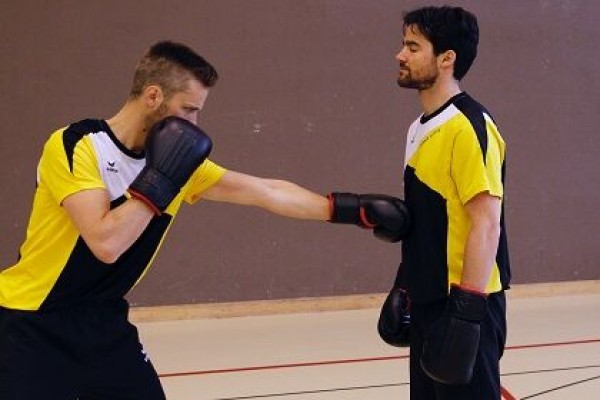
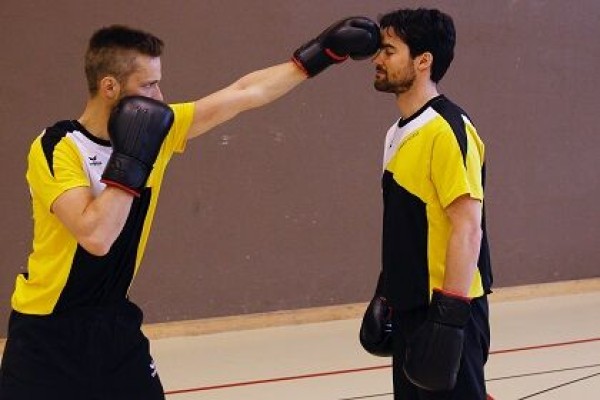
One participant closes their eyes, lets their arms hang loosely and accepts being hit by their partner. The partner touches the forehead and stomach of their opponent as often as possible within a set time without the opponent tensing up. The arm must be fully extended and the fist brought back to the cheek after each hit. Switch roles after a while.
Participant:
1 pair of boxing gloves
Pulling an object while standing
Power
Individual work
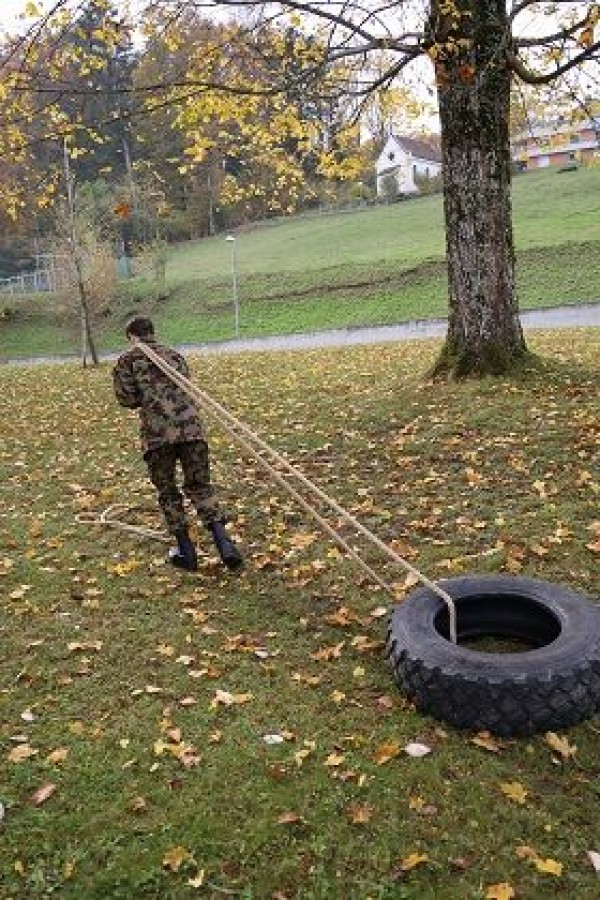
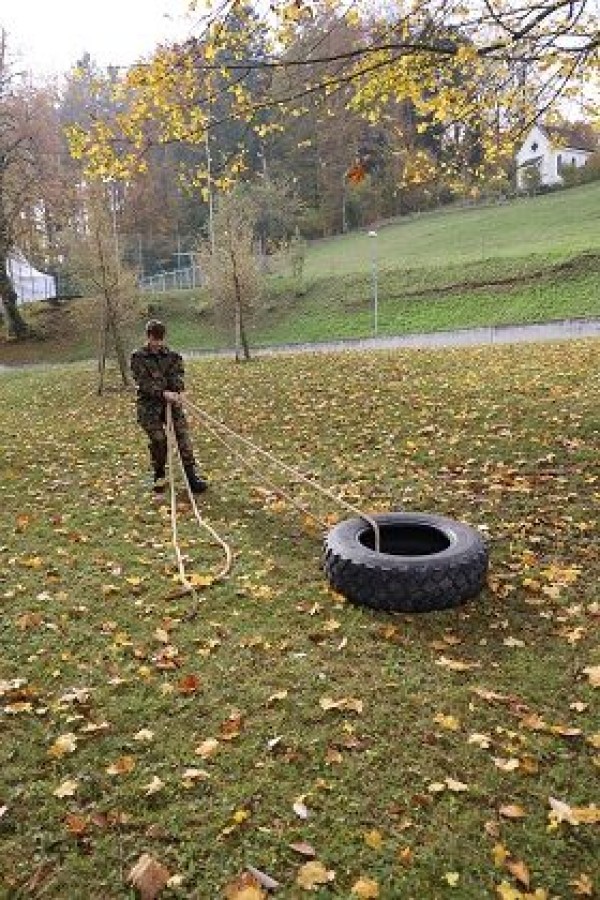
Pull the tyre attached to a rope/rope over a certain distance, transport options:
Back to the tyre, grasp the rope/rope over one shoulder with both hands;
Look towards the tyre, grasp the rope in front of the body with both hands and run backwards.
Attention:
Keep your upper body upright (tense your torso).
Lighten:
Less weight/load.
Harden:
More weight/greater load.
1 tyre (DURO)
1 rope/rope
1 tyre (PUCH) ► Make the exercise easier
1 tyre (10DM) ► Make the exercise more difficult